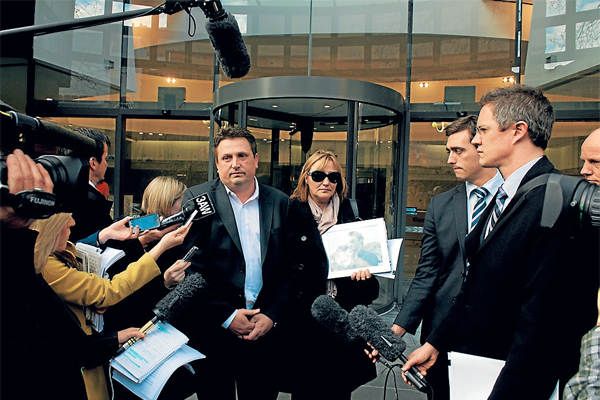THE parents of Allem Halkic, who died after jumping off the West Gate Bridge, have told of the “void in their hearts” after the coroner found his death was unpreventable.
Coroner Audrey Jamieson reached her finding
despite the annual average rate of suicides from the bridge declining, from 10.5 to 1.9, since temporary safety barriers began to be installed just two months after the Altona Meadows teenager’s suicide in February 2009.
Ms Jamieson also found there had not been an increase in railway suicides or “jump-from-height” suicides at other locations since the installation of safety barriers on the West Gate.
In a statement for the Weekly, Ali and Dina Halkic, who initiated the inquest, said everything they had done since their only son’s death had been to prevent more lives being lost.
“As Allem’s parents, we set out to find out why there was nothing in place for prevention of the amount of suicides on the West Gate Bridge and all the deaths [that] were not looked at to see what could have been done to prevent so many lives being lost.
“The findings have proven that prevention has worked, being 10.5 [suicides] reduced to 1.6 since the barriers have been completed.
“That is close to a 90per cent reduction with all the hard work and awareness the family has done, not only for Allem but for many.
“We feel that had Allem been detected there would be a high chance he would have been prevented in taking his life, as the measures that are in place now would have saved our son and many others.
“The coroner had highlighted also that there has not been an increase in other locations and overall the changes to the West Gate have made a difference and also reduced the deaths on the bridge.”
They said it left “a void in our hearts” that the new measures were not in place “at Allem’s dark moment”.
“The family also would like to thank Victoria police and ambulance for all their efforts and thank them for all they had to endure to help our son.” Ms Jamieson said it was “regrettable” that emergency personnel trying to reach Allem were hampered by factors such as locked gates under the bridge. However, she found that “they made no difference to the outcome”.
Allem, who was 17, started walking on the bridge at 4.39am. He used a VicRoads emergency phone at 4.53am, telling the call-taker that he was going to jump. He vaulted from the bridge at 5am.
Police found him alive at 5.18am and paramedics tried to resuscitate him. Due to a lack of lighting they used a police torchlight, but he was declared dead at 5.40am.
Ms Jamieson said: “If Allem’s call for help is to be interpreted as a ‘call for help’, seven minutes is a relatively short period of time to enable anyone to effectively intervene …”
She made no recommendations related to Allem being a victim of cyberbullying in the lead-up to his death. In April 2010, Bacchus Marsh man Shane Gerada, then 21, was convicted of stalking the teenager before his death.
VicRoads’ regional director, Nial Finnigan, told the inquest that along with the “no-climb” barriers installed at the bridge, new cameras would automatically detect pedestrians and trigger an “instantaneous” response from trained personnel.
Mr Finnigan said there would be a permanent security office under the bridge with personnel able to open gates. The area would also be automatically floodlit.
Anyone with problems can call Lifeline on 131114 or the Suicide Helpline on 1300651251. The Compassionate Friends, a support group for bereaved parents, can be reached on 98884944.








